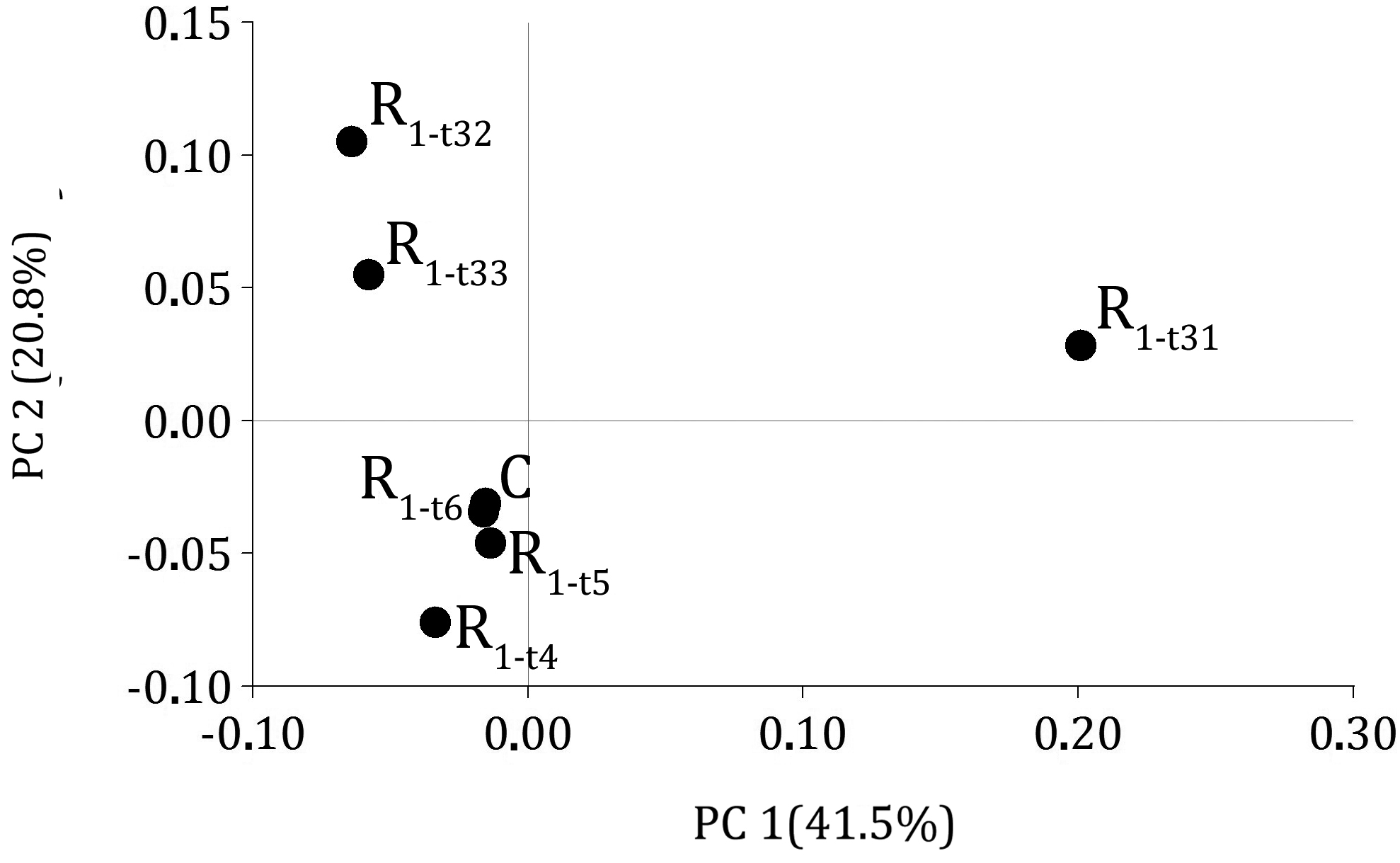Analysis of genetic variability in in vitro regenerated buffelgrass plants through issr molecular markers
Keywords:
Apomixis, somatic embryogenesis, somaclonal variation, anther culture, ISSR, genetic diversityAbstract
Genetic variability can be generated through in vitro culture via somaclonal variation. This tool can be potentially useful in a breeding program involving apomictic buffelgrass genotypes. The aim of this work was to evaluate inter simple sequence repeats (ISSR) as molecular markers to detect genetic variation in in vitro buffelgrass regenerated plants. Six plants regenerated from in vitro anther culture, via somatic embryogenesis were used, as well as the anther donor genotype (RN 51) as control. Of a total of 26 ISSR primers tested, 22 amplified, detecting 12% polymorphism with a divergence between 5 and 24% from RN 51. Amplification products were observed with the primers containing di-, tri- or tetra-nucleotide sequences, with or without additional nucleotides at the 3"² end. The most informative primers were those containing the repetitive sequences GACAn, AGn or GAn. Moreover, the regenerants transplanted at field conditions differed in morphological characteristics among them and with respect to RN 51. This study confirms that ISSR are useful to identify genetic variability in in vitro regenerated buffelgrass plants.

Downloads
Published
Issue
Section
License
Aquellos autores/as que tengan publicaciones con esta revista, aceptan las Políticas Editoriales.


